That’s how this statue of Prince Albert at Holborn Circus was described by one observer …
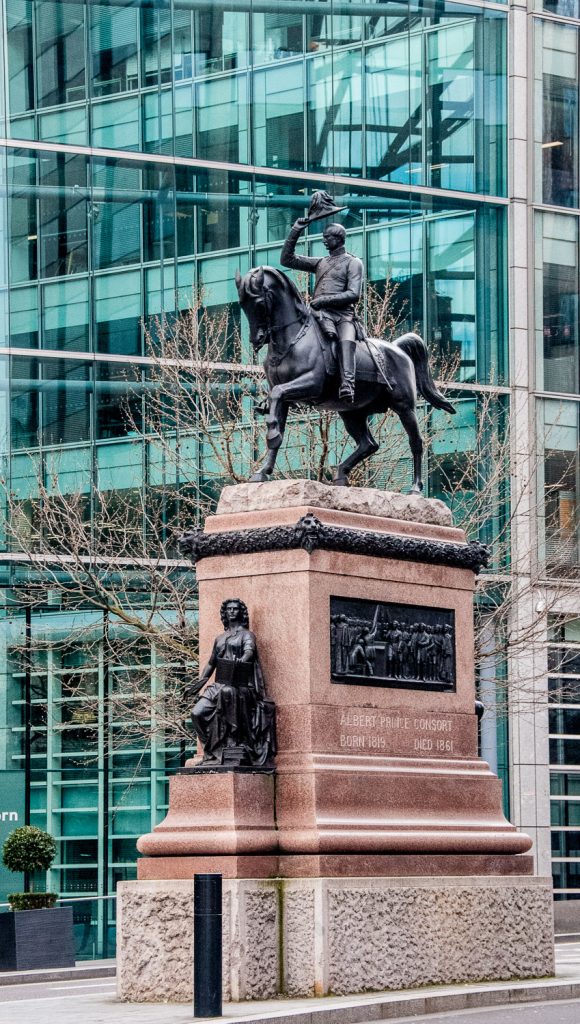
Here he is again from a different angle …
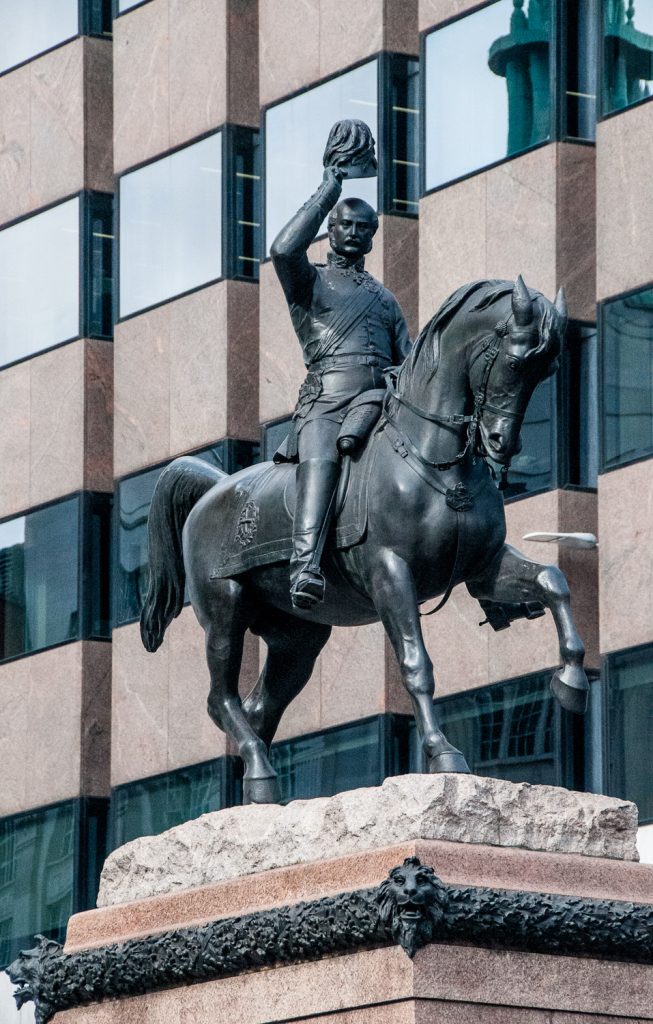
He is shown astride a high-stepping horse, in the uniform of a Field Marshal, and raising his plumed hat in acknowledgment of a salute. He isn’t, therefore, waving at imaginary crowds, and so the epithet of ‘politeness’ is sadly misplaced.
The way the Prince and his horse faced was the subject of some debate but finally decided when the sculptor, Charles Bacon, wrote the following to the architect William Heywood on 9 May 1873 …
I most decidedly think the horse’s head ought to look into the City … as a matter of etiquette he ought not to turn his back on those who erected the statue and … most important of all, the sun would be on the face most of the day.
This arrangement was, of course, less satisfactory when viewed from Holborn!
Not everyone liked it. Common Councilman L.H. Elliott said the statue …
… was not suggestive of a man of military genius; but at best it only represents a captain of a cavalry regiment saluting some ladies in a balcony.
At the west end of the plinth is a seated allegory of Peace wearing a laurel crown …
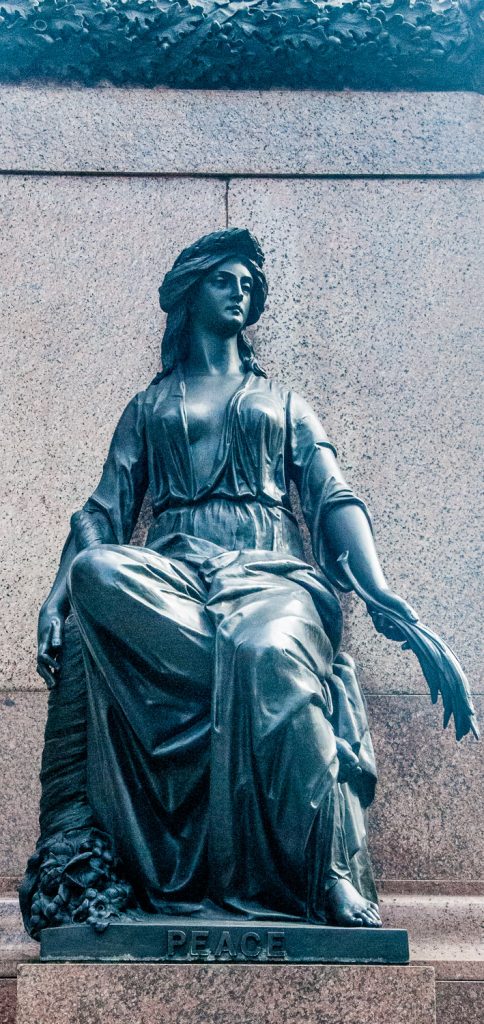
In her left hand she holds a (rather droopy) palm and her right supports a cornucopia.
At the east end there is a seated allegory of History, her curly hair falling generously down her back and her right breast exposed …
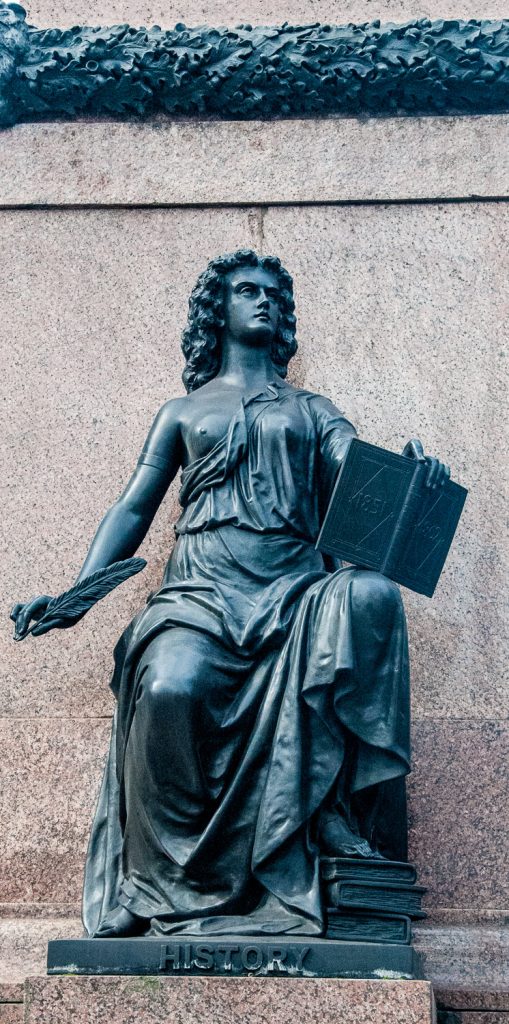
Her left leg rests on three books and in her left hand she holds a guide to the 1851 Great Exhibition which Albert played a major role in organising. The quill in her right hand is new, the original having been stolen some time since the unveiling in 1874.
The relief on the north side shows him standing with a ceremonial mallet beside the foundation stone of the Royal Exchange. Two workmen are preparing the pulley …
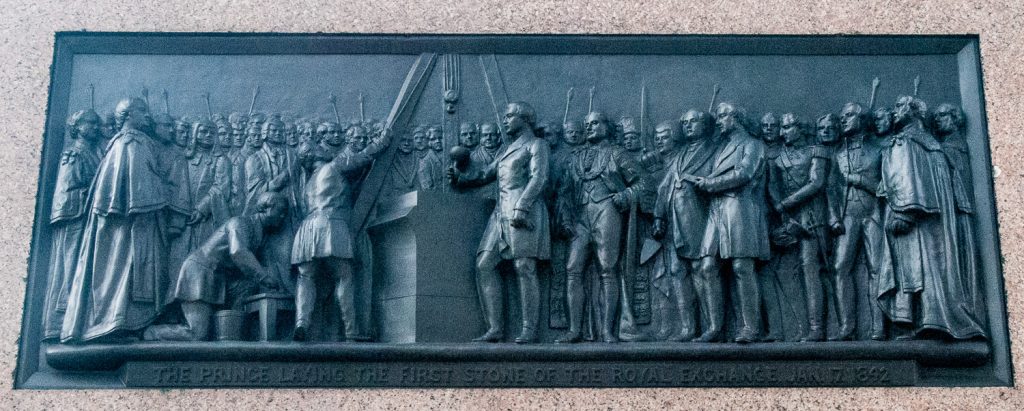
He is surrounded by a crowd of dignitaries including, directly behind him, the Lord Mayor. One of the persons in attendance holds the ceremonial trowel in readiness.
The relief on the south side shows Britannia enthroned, a lion reclining at her feet …
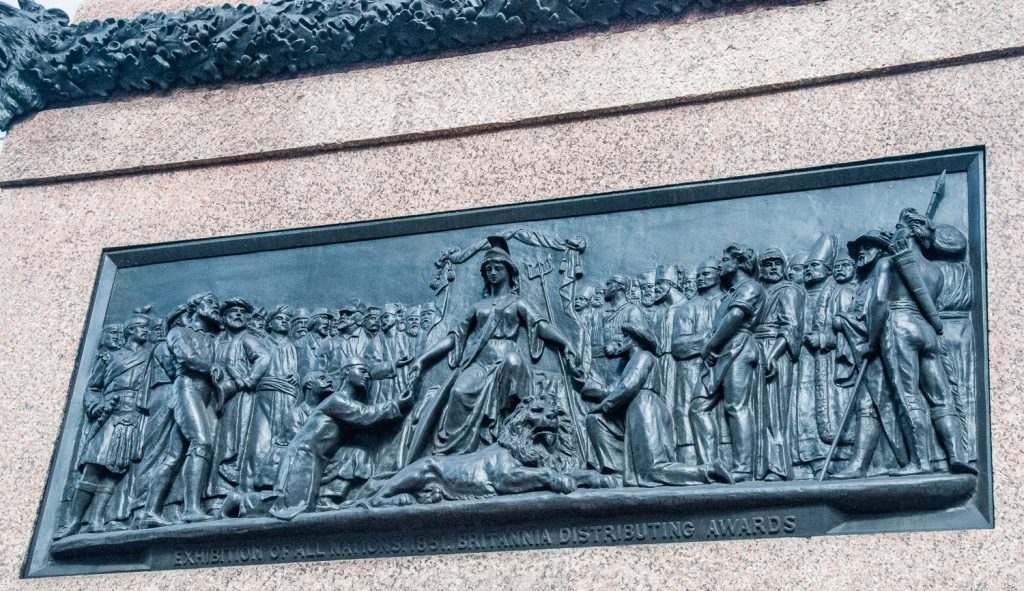
She holds out laurel crowns to representatives of the exhibiting nations who are all dressed in their national costumes.
Here is a close up of the Prince taken from the north …
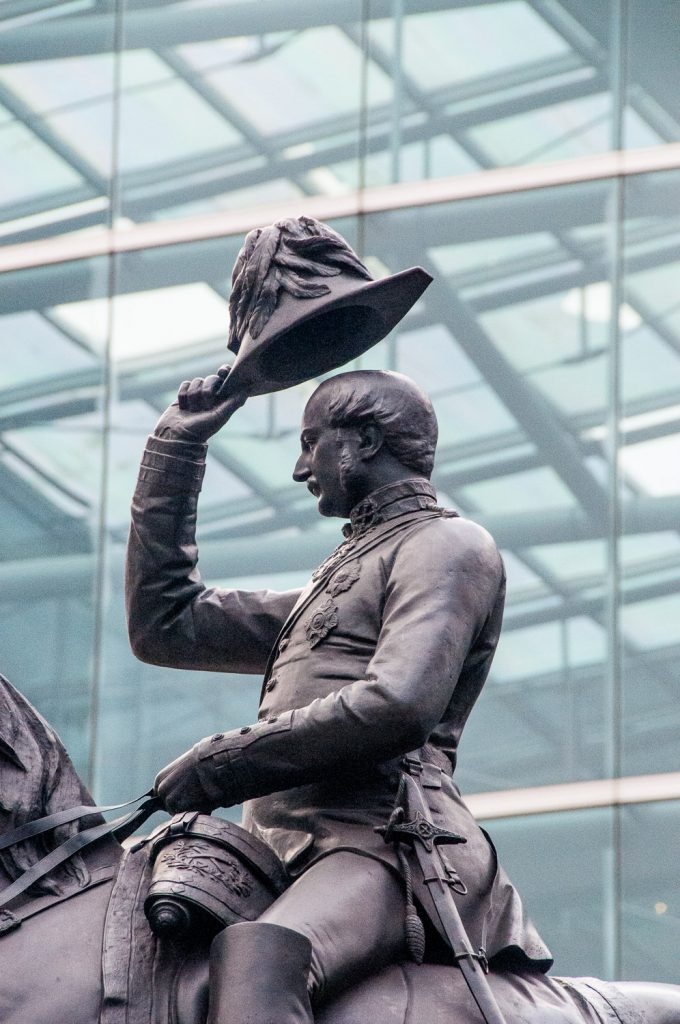
Just like History’s quill, a thief had made off with his original sword some time in the past, so this is a replacement. The sculptor paid incredibly close attention to detail and the restorers in 2014, Rupert Harris Restoration Limited, did a superb job. You can watch a fascinating video about the restoration here: https://www.youtube.com/watch?v=XVgMoZW3Gdg
There is a mystery concerning the statue – to this day we don’t know who paid for it.
A sculpture of Albert had been discussed for some time and in 1868 Charles Oppenheim (the founder of the De Beers diamond company) came forward offering to meet the cost. Apparently, however, his probity was questioned by some and, perhaps as a result of this, he subsequently formally withdrew the offer.
After the monument was erected The Times, quoting the City Press, reported …
The donor is a very benevolent gentleman of considerable wealth, who is desirous that his name should not be announced, and it is, we believe, known only to Her Majesty, His Royal Highness the Prince of Wales, to Alderman Sir J.C. Lawrence … and to Mr Bacon.
As is often the case, I am grateful to Dr Philip Ward-Jackson and his splendid book Public Sculpture of the City of London for being the source of much of the content of this week’s edition.
You can see some earlier pictures of the monument in my blog The City before the War.
Remember you can follow me on Instagram :
